President's Message
Recently, there was an article in the Richmond Times-Dispatch. The Intercollegiate Studies Institute released the results of its national survey titled "Our Fading Heritage: Americans Fail a Basic Test on their History and Institutions." Only 21 percent of the survey respondents knew that the phrase "government of the people, by the people, for the people" comes from President Abraham Lincoln's Gettysburg Address. The article went on to quote a 1990 Gallup survey for the National Endowment of the Humanties which found that 25 percent of 700 college seniors did not know Columbus landed in the Western Hemisphere before the year 1500; 42 percent could not place the Civil War in the correct half century; and 31 percent thought Reconstruction came after World Ward II. A 1999 survey taken by the American Council of Trustees and Alumni of seniors at the nation's top 55 liberal arts colleges and universities found that 98 percent could identify Snoop Dogg and Beavis and Butt-Head, but only 34 percent knew George Washington was the general at the battle of Yorktown.
This alarming report calls for a review of the HCHS mission statement: The purpose of this Society shall be to bring together people interested in history, especially the history of Henrico County in Virginia.
The major function will be to discover and collect any material which may establish or illustrate the history of the area; its exploration, settlement, development and activities in peace and in war.
The Society will cooperate with public bodies in preserving and making accessible archives of the county, its communities, towns and institutions, and will promote the identification and preservation of historical artifacts, sites, structures, roadways, and streams.
The Society will disseminate historical information with publications, meetings with lectures and discussions, tours, the marketing of sites, and by the use of all means of awakening public interest.
The recognition of history begins on a local level. I am proud to say the Henrico County Historical Society is an award-winning organization for its promotion of history. In 2008, the Society, along with the County of Henrico, Division of Recreation and Parks, was presented by the National Assocation of Counties (NACO) an award for a joint Cemetery Identification Project.
Also in 2008 the Central Virginia Civil War Collectors Association issued an award for "Best Presentation of the Year" to Dr. Louis Manarin and myself with the assistance of Trevor Dickerson for a program on behalf of the Society.
I might also mention that the purpose of the proceeds from the Society's annual calendar project is to establish a scholarship to be issued to a college-bound high school student who is interested in the study of history. 2009 calendars are still available. If you have not yet made a purchase, please do so.
We have quite a number of exciting events planned for 2009. You will find in this issue a schedule for the quarterly meetings for the year so that you may save the dates. I am looking forward to our first quarterly meeting for 2009 on March 1. Ken Murphy, President of Friends of Meadow Farm and the "Friends" will be serving refreshments made from historic recipes. Our guest speaker, Sylvia Wright, was interviewed for "No Stone Unturned," the latest release by the Public Relations and Media Services, and we will be presenting that film. A number of other HCHS members were interviewed in the presentation as well.
HCHS will also sponsor a motor coach tour of the Seven Days Battlefields on May 9 in recognition of the upcoming Sesquicentennial Commemoration of the American Civil War. A discount will be offered for HCHS members. Space will be limited, so please be sure to send your reservations promptly.
We are also planning a fundraiser tea party at "Cuppa Tea" where you may learn historical dancing, compliments of the Colonial Dance Club. You will receive information about this event at a later date.
Planning meetings are underway for the upcoming 400 year Commemoration of the founding of Henrico County in 2011. Events will be held to increase public awareness of the historic significance of this county and to celebrate our cultural diversity. The Henrico Historical Society is honored to participate in such an auspicious occasion.
Sarah Pace
President
>Back to Top<
Author to Address HCHS
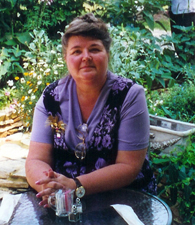
Sylvia Hoehns Wright, Recipient of the 2006 Writer's Connection VA Book Competition Award, will speak to the society at its March 1st meeting.
Her book, A Path Worn Smooth, is dedicated to the people of Laurel Histric District. Wright invites readers to walk a path worn smooth by generational expectation.
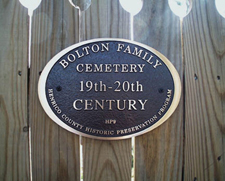
When the opportunity to restore her family's cemetery site arose, she researched its history and recorded the research with Henrico County. This resulted in the placement of a plaque at the Bolton family cemetery. Sylvia was interviewed in the newly released HCTV documentary, "No Stone Unturned," which we will show while refreshments are being served.
>Back to Top<
Here's What the Friends of Meadow Farm are Cooking Up for the March Meeting
Terry Murphy was kind enough to share these recipes that the Friends of Meadow Farm will treat us to at our March meeting. Why not give them a try at home?
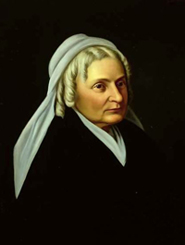
Mrs. Robert E. Lee's Gingerbread - 19th century recipe version, courtesy of the Virginia Historical Society:
6 cups of flour 1 of lard with a table spoonfull of butter two tea spoonfuls salt, a cup of butter milk teaspoonful of soda sifted with the flour half a cup of brown sugar as much moasses as will make a dough which must be rolled out & baked in a moderate oven. The dough should be well worked out & rolled with flour enough to make the cakes smooth but not to have any on the outside when baked.
Modern Method, courtesy of Nancy Carter Crump, Hearthside Cooking, 1986
1/2 cup softened lard
1 tablespoon softened butter
1/2 cup brown sugar
1/2 cup buttermilk
1/2 cup molasses
3 1/2 cups sifted flour (or more)
1 teaspoon salt
1 teaspoon soda
2 1/2 teaspoons ginger
(Add 1/2 teaspoon cinnamon and 1/4 teaspoon allspice if you like spicier cookies)
1. Cream lard and butter. Add sugar and beat together well.
2.Blend in buttermilk and molasses.
3. Sift together dry ingredients and gradually add to liquids.
4.Turn dough out onto lightly floured surface and knead briefly to thoroughly incorporate ingredients, blending in extra flour if needed.
5. Roll out dough to 1/4" thickness. Cut with a round cutter.
6. Preheat oven to 350 degrees. Put cakes on greased cookie sheets and bake 12 to 15 minutes. Remove to a rack and cool. Makes about 3 dozen.
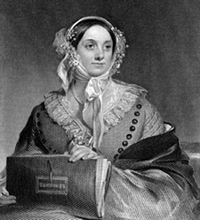
Eliza Leslie was born in 1787. She lived most of her life in Philadelphia. After her father died in 1803, she and her mother ran a boardinghouse, and she began a long career as a writer. Her Directions for Cookery, first published in 1837, was probably the most popular American cookbook of the nineteenth century. A 60th edition appeared in 1870, twelve years after the author's death. The recipe for jumbles appears in the 1837 version and also in an earlier cookbook that came out in 1828, Seventy-five Recipes.
Jumbles
19th century version:
Three eggs
Half a pound of flour, sifted.
Half a pound of butter.
Half a pound of powdered loaf-sugar.
A table-spoonful of rose-water.
A nutmeg grated.
A teaspoonful of mixed mace and cinnamon.
Stir the sugar and butter to a cream. Beat the eggs very light. Throw them, all at once, into the pan of flour. Put in, at once, the butter and sugar, and then add the spice and rose-water. If you have no rose-water, substitute six or seven drops of strong essence of lemon, or more if the essence is weak. Stir the whole very hard, with a knife.
Spread some flour on your paste-board, and flour your hands well. Take up with your knife, a portion of the dough, and lay it on the board. Roll it lightly with your hands, into long thin rolls, which must be cut into equal lengths, curled up into rings, and laid gently into an iron or tin pan, buttered, not too close to each other, as they spread in baking. Bake them in a quick oven about five minutes, and grate loaf-sugar over them when cool.
Modern Method - courtesy of Nancy Carter Crump, "Hearthside Cooking", 1986
1 cup butter
1 cup sugar
1 egg
1 tablespoon rose water
3 cups sifted flour
2 teaspoons freshly grated nutmeg
1/2 teaspoon mace
1/2 teaspoon cinnamon
Additional grated sugar
1. Cream butter and sugar until very light. Add egg and rose-water, blending thoroughly. (May substitute lemon extract to taaste for rose-water.
2. Sift flour with spices. Add all at once to creamed mixture, blending well.
3. Wrap dough and chill at least 2 hours.
4. On lightly floured surface, roll out dough to 1/4" thickness.
5. Cut with doughnut cutter or cut into strips 1"x8" and shape into rings.
6. Bake cookies on ungreased sheets in preheated 375 degree oven 10 to 12 minuts or until lightly browned around edges. Remove to rack, sprinkle with sugar and cool. Makes about 3 dozen.
>Back to Top<
Battlefield Tour
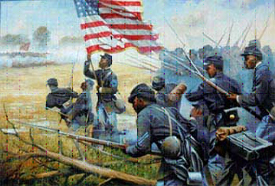
Make plans to join us on Saturday, May 9th as we board a motor coach for a guided tour of the Civil War Battlefields of 1862 and 1864 in Henrico County. The trip will run from 9:30 a.m.-3:00 p.m. The cost is $45 for HCHS members and $55 for non-members.
We'll depart from the newly restored Dabbs House (3808 Nine Mile Road) after a walking tour of this site of Robert E. Lee's Seven Days Battle headquarters.
We'll be treated to the insights of Dr. Louis Manarin, author of Henrico County Field of Honor, who will conduct the tour.
Please mail this form to Sara Pace at 2305 Leah Road, Richmond, VA 23230. Make checks payable to the Henrico County Historical Society.
We look forward to seeing you!
>Back to Top<
2009 HCHS Quarterly Meeting Schedule
June 7th
Our second quarterly meeting takes place at Laurel Hill United Methodist Church. This meeting will be generously hosted by The Varina Womans Club of Laurel Hill. Founded almost 150 years ago in the heart of Varina, Laurel Hill is featured in the HCHS 2009 Calendar, Historic Churches of Henrico County.
September 13th
Our third quarterly meeting takes place at Hilton Garden Inn in Downtown Richmond (formerly the historic Miller & Rhoads Building). Speakers George Bryson and Earle Dunford introduce their book, Under the Clock: the Story of Miller & Rhoads. The authors will share anecdotes they have collected from the many devoted shoppers and loyal employees who remember the good old days at Miller & Rhoads. Meet them under the clock to read about the famous Tea Room, Book and Author Dinners, fashion shows, Sara Sue hats, and countless other memories of a bygone era in shopping.
December 6th
Our last meeting of the year takes place at Henrico Theatre. Speaker Donald Gunter will present Tommy Edwards, Henrico singer/songwriter and subject of the Dictionary of Virginia Biography project. You'll be tapping your toes to music of the 1950's.
>Back to Top<
Genealogy Corner
Announcing Virginia Genealogical Society's Spring Conference to be held on April 18, 2009 at the Library of Virginia, which is located at 800 East Broad Street in Richmond, VA. The topic of the conference is Secrets for Successful Research.
The cost of the conference is $30.00 for VGS members and $40.00 for non-members. For details and registration, visit www.vgs.org.
Now we'd like to introduce a new feature: A genealogy column.
It is our hope that you will post questions that you have regarding your own geneaological rsearch and that you will respond to items posted by others. If you have a question, project, or answer, please email Joey Boehling at jboehling@verizon.net. We'll post such emails in our quarterly newsletter.
Joey posts the first inquiry: I am interested in learning more about my great-great grandfather Seth Davis. He was born in 1805 and in the 1830s owned land in Henrico near Quiocassin Road. I would love to know just where the land was, and I'm having ahard time finding out who his parents were. Any help would be greatly appreciated.
>Back to Top<
Check Out Envision Henrico
Envision Henrico's efforts are featured prominently on the newly launched statewide environmental blog, www.ArticleXI.com (09/23/15 - no longer exists), led by a coalition of organizational leaders including VALCV's (Virginia League of Conservation Voters) Climate Change Coordinator Jessica Lee. Feel free to post comments to generate excitement and interest: www.articlexi.com (09/23/15 - no longer exists).
Also, here is the link to Envision Henrico's webpage which includes an "Envision Henrico News" link with a history of our press coverage and alerts: www.valcvef.org.
>Back to Top<
Meals on Wheels in High Style Aboard the Henrico


In May of 1950, Pullman-Standard delivered a 36-seat dining car to the Richmond, Fredericksburg & Potomac Railroad. The RF&P named the car Henrico. It was apparently a popular model because in March and April of 1950, Pullman-Standard had delivered ten 36-seat dining cars with the following names: Atlanta, Birmingham, Cordele, Fitzgerald, Greenville, La Grange, Moultrie, Plant City, Talladega, and Tarboro. This light dining car featured purple letterboards, black trucks and a black roof.

Diners might have been served on china like that pictured. The Fredericksburg pattern has a triangular logo and was manufactured by Shenago.
>Back to Top<
Dr. England's Root of Man: Could It Replace Quinine?

Thanks to the folk medical lore of African-American slaves in Henrico County, the lowly milkweed plant (Asclepias syriaca) had a brief period of medical fame in the middle of the nineteenth century. In 1856, Dr. Richard S. Cauthorn published an article in The Southern Journal of the Medical and Physical Sciences (Volume 5, pages 368-374), entitled "A New Anti-Periodic and a Substitute for Quinia." Claiming to have found a substitute for quinine, he wrote: "The plant was first presented for my inspection, in September last, by Mr. Joseph Barnard, of Henrico County, Virginia, who had informed more than twelve months previously, that he was in possession of the knowledge of a plant, the bark of whose root would cure intermittents with more certainty than quinia."
Barnard had claimed that he had succeeded in curing a protracted case of ague and fever with the dried plant, a case which his own doctor couldn't cure. Dr. Cauthorn showed it to "one of our own servants [i.e. slaves] living in the county who said he was familiar with it." He learned that it was called Dr. England's Root of Man, apparently named by an old "root doctor" named Ragland who lived in Goochland. Cauthorn also wrote that the plant had been in use in "Henrico, Hanover, and Goochland, as a domestic remedy in various diseases for twenty years, and perhaps, for a much longer period, under the appellation of the root of man or man root."
Cauthorn described the use of the bark of the intensely bitter, even nauseating root in treating several cases. He rolled the sticky juice of the root into pills the size of buckshot and sent them to a woman in the country suffering from intermittent fever. She took them and claimed a speedy recovery. He also dried the bark of the root, pulverized it, mixed it with capsicum and used wheat flour to bind the mixture into small pills. With these he claimed to cure "an elderly negro man at a short distance above the city [Richmond]" suffering from an ague, pain in the back and limbs and a general uneasiness over a period of a week.
He concluded his article with the following: "I have...a desire to raise to its proper level one of our most valuable anti-periodics, and thereby to subserve the cause of the healing art and of humanity.
>Back to Top<
Playing the Ponies in 17th Century Henrico
Horse racing, the sport of kings, also seems to have been the sport of choice for early residents of Henrico County, for many instances of disputed wagers are recorded in Henrico County Minute Books and Records. One popular racetrack was situation at Bermuda Hundred, now Chesterfield County, but in 1678, Henrico. In July of that year, according to the Henrico County Minute Book, a race was run between horses belonging to Abram Womack and Richard Ligon. The owners were not the riders, and after running about five lengths, one horse shied from the track claiming an unfair start. The other rider, a servant, was ordered by his master to stop, but he didn't; and when he returned, declared the race was in fact fairly begun. This contention was sustained by Abram Childers, who had been chosen to act as starter.
Ligon and Martin show up again in a race dispute in 1683. During a gathering at Womack's house, Edward Hatcher and Edward Martin were challenged to race their horses. Ligon, however, claimed that Hatcher's horse was his and refused to allow it to race. Hatcher protested, mounted the horse prepared to race, but was persuaded not to by Ligon. Claiming, "I can't help it" in reference to his inability to carry out his agreement, he thought he should not be held liable for the bet. But the men selected to judge the race ignored his request and ordered Martin to run the track alone. He did and returned to claim the other horse as his. Ligon objected, the case found its way to court, and the court held Hatcher strictly to his verbal contract.
A track at Varina held races regularly, and those races had their place in legal history as well. One hundred pounds of tobacco was at stake when the younger Thomas Batte and Richard Parker raced their horses. Batte accused Parker's mare of crossing his horse and impeding his progress. The case went to court, and the only equitable solution the justices could find was to rerun the heat on the same course. Neither the details of the race nor the result were recorded.
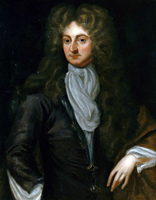
The track at Varina continued to produce contentious results like the race in 1690, after which Captain William Soane entered a suit against Robert Napier for ten pounds sterling, claiming to have won by default. The deponents and decision make this case interesting. Reverand James Blair, a distinguised clergyman, actually asked to deliver testimony in the case, testifying that Napier had left the track with his horse before the time agreed upon to start. In addition, Captain William Randolph also was a deponent. While we might find a modern-day aristocrat attending and betting on horse races, we would probably be surprised to find a fairly high-ranking clergman doing so. The jury decided in favor of Soane. It is interesting that legal preceedings at the time seemed generally to hold that when two parties had agreed to race their horses, their verbal contract was required to be strictly carried out. Nothing short of the death of one of the horses really seemed to be a valid legal excuse for withdrawing.
At another Henrico track, the Ware, Thomas Jefferson, Jr. raced his mare Bony against Watt, a horse owned by Thomas Hardiman over a quarte of a mile. The mare was given a head start, and the weight of each jockey was limited to one hundred thirty pounds. The mare apparently won, but, of course, a dispute arose, which went to court. The sources, unforutnately, do not indicate the outcome of the case.
One last incident to be discussed here was a 1699 race at a track at Malvern Hill, in which the distinguished William Randolph served as starter. The agreement was that the horses would each keep to its own side of the track unless at the start, the William Sutton's horse could get possession of the side of the track occupied by William Eppes' horse. As a deponent in the case, Randolph testified that the two horses did collide.
Henricoans who wish to watch the ponies today must travel east to Colonial Downs, north to Maryland or northwest to West Virginia, and disputes over finished and defaults are decided by photographs and track officials. Three hundred years ago, it was obviously quite different.
>Back to Top<
What Do You Know?
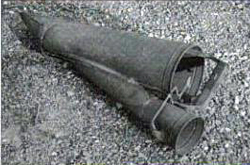
Last month's "What do you know?" item was a tobacco planter. Seed was sown in beds in very early spring or very late winter, and after seedlings germinated, the plants (or slips) would then be replanted out in the field using this hand held device. The pointed end opened a hole in the ground for the slip. Water was placed in the small container on the side, and a small amount was released by pulling the trigger. This ensured every plant was watered at the time of planting. A mule or tractor could pull a two-man planter as seen in the smaller photo. Each man loaded a slip that the planter placed into a furrow. Water was supplied by the tank directly in front of the planter.
The photo below is by the Nichols family, available at http://sallysfamilyplace.com/new/maple-lawn/.

Ross Joseph Nichols and Louis Vann transplant tobacoo on the Nichols farm in the Roanoke-Chowan area of North Carolina. The planter was originally pulled by mules, but the mules have been replaced by the tractor. This one is driven by Fred Nichols.
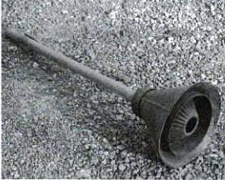
Pictured here is a household implement. It is about 3 feet long. The end on the right is metal, and the handle is wood. Do you know what it was used for? Email your answers to jboehling@verizon.net.
>Back to Top<
News 2009: First Quarter
Second Quarter | Third Quarter | Fourth Quarter
Home | Henrico | Maps | Genealogy | Preservation | Membership | Shopping | HCHS
|











